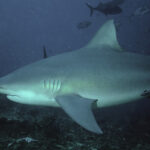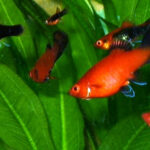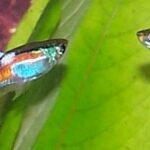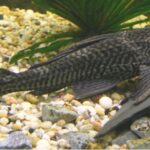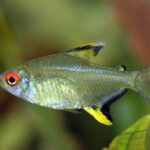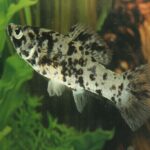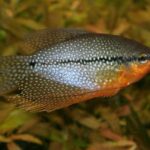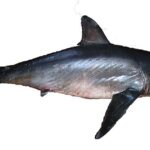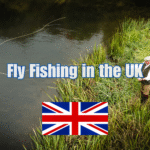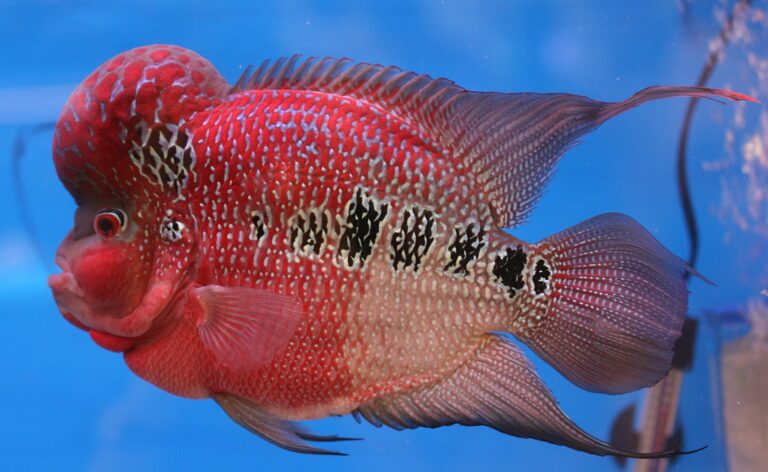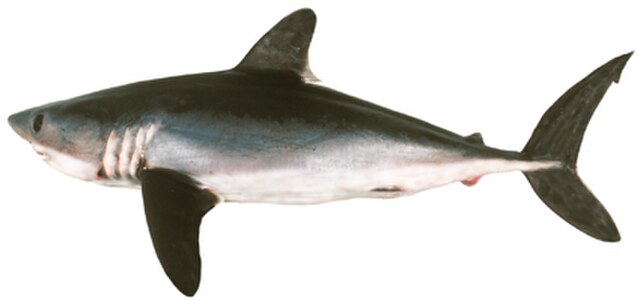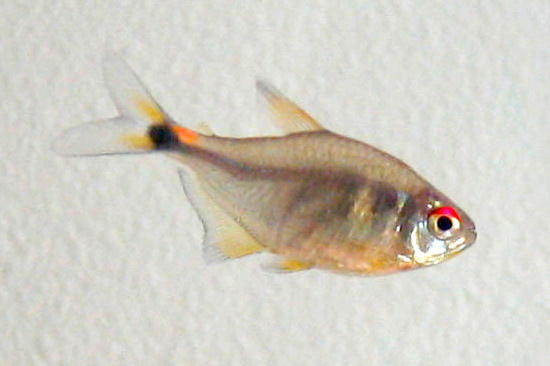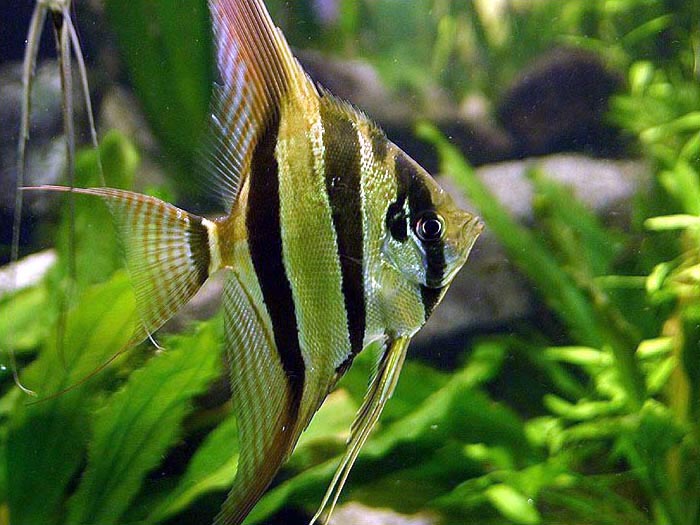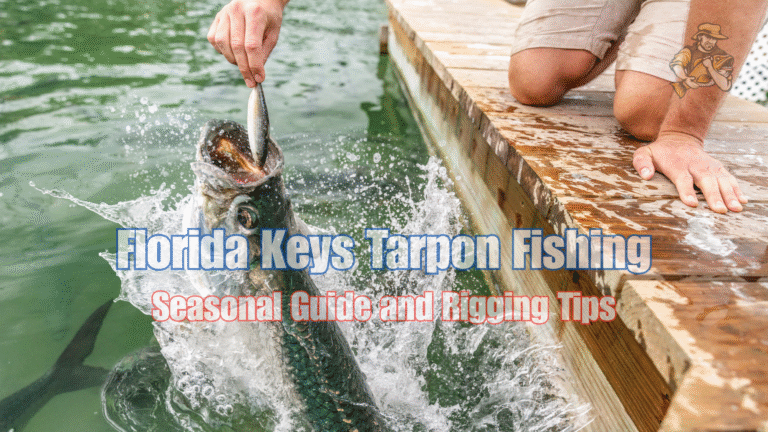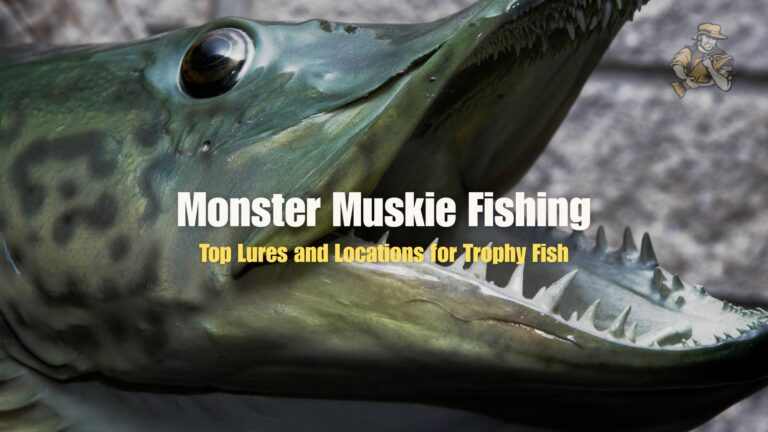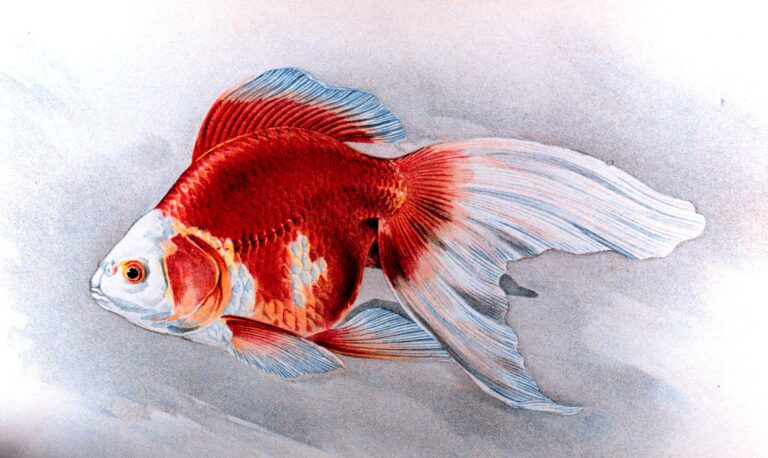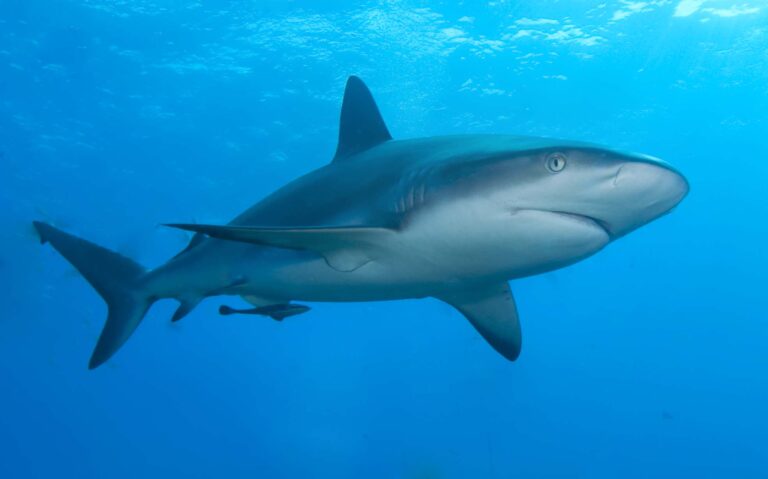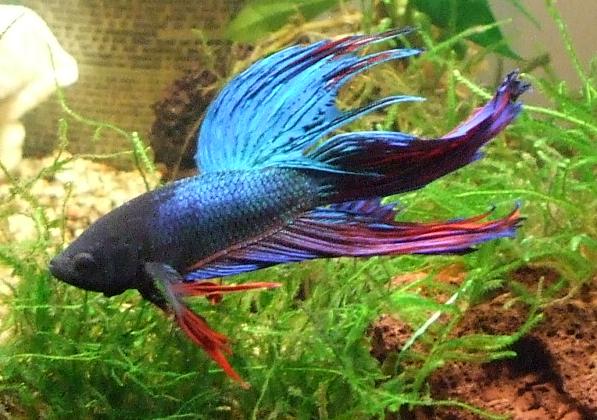Green Swordtail
By Ryan Maron | Last Modified: June 11, 2025

The Green Swordtail (Xiphophorus hellerii) represents one of the most recognizable and ecologically significant freshwater fish species in both natural and aquarium environments. This vibrant livebearing fish, distinguished by the male’s characteristic sword-like tail extension, plays a crucial role as both predator and prey within its native Central American ecosystems. Originally inhabiting river systems from Mexico to Guatemala, the Green Swordtail has become globally distributed through the aquarium trade and has established naturalized populations in numerous countries.
The species serves as an important indicator of freshwater ecosystem health while contributing to nutrient cycling through its omnivorous feeding habits. Green Swordtails demonstrate remarkable adaptability to varying water conditions, making them valuable subjects for evolutionary biology research and popular choices among aquarium enthusiasts worldwide. Their prolific breeding capabilities and hardy nature have made them essential components of tropical freshwater communities in both wild and captive settings.
| Feature | Details |
|---|---|
| Common Name | Green Swordtail |
| Scientific Name | Xiphophorus hellerii |
| Family | Poeciliidae |
| Typical Size | Males: 10-12 cm (4-5 in), Females: 12-16 cm (5-6 in) |
| Habitat | Freshwater streams, rivers, and vegetated areas |
| Diet | Omnivorous – algae, insects, plant matter |
| Distribution | Native to Central America, introduced worldwide |
| Conservation Status | Least Concern |
Taxonomy & Classification
The Green Swordtail belongs to the family Poeciliidae, a diverse group of freshwater fish commonly known as livebearers. First scientifically described by Johann Jakob Heckel in 1848, Xiphophorus hellerii derives its genus name from the Greek words “xiphos” meaning sword and “phoros” meaning bearer, directly referencing the distinctive elongated caudal fin extension found in males.
Within the genus Xiphophorus, the Green Swordtail represents one of 28 recognized species, forming part of a complex evolutionary group that includes the closely related Southern Platyfish (Xiphophorus maculatus). Molecular phylogenetic studies have revealed that swordtails and platys diverged approximately 4.5 million years ago, with the sword-bearing trait evolving multiple times independently within the genus.
The taxonomic classification follows: Kingdom Animalia, Phylum Chordata, Class Actinopterygii, Order Cyprinodontiformes, Family Poeciliidae, Genus Xiphophorus, Species X. hellerii. Recent genetic analysis has identified several subspecies based on geographic distribution and morphological variations, though taxonomic consensus remains under active research within the scientific community.
Physical Description
Green Swordtails exhibit pronounced sexual dimorphism, with males displaying the characteristic sword-like extension of the ventral rays of the caudal fin that can measure 25-50% of the fish’s body length. This sword typically displays vibrant coloration ranging from bright yellow to orange-red with distinct black edging. Adult males reach lengths of 10-12 centimeters excluding the sword extension, while females grow larger at 12-16 centimeters with rounded caudal fins.
The body coloration varies significantly among populations, with wild specimens typically showing olive-green flanks marked by a prominent horizontal stripe extending from the gill cover to the caudal peduncle. This lateral line often appears iridescent blue-green under proper lighting conditions. The dorsal region displays darker olive tones while the ventral area remains pale yellow to silver.
Males possess a modified anal fin called a gonopodium, which serves as the reproductive organ and measures approximately 20-25% of the standard body length. Females maintain the typical fan-shaped anal fin structure. Both sexes feature relatively large eyes adapted for their omnivorous lifestyle, with the iris often displaying golden highlights. The mouth terminal position and moderate size accommodate their varied diet of plant matter, small invertebrates, and organic detritus.
Selective breeding in aquarium populations has produced numerous color variants including red, orange, black, and albino forms, though these artificial varieties rarely survive in natural environments due to increased predation pressure and reduced fitness.
Habitat & Distribution
The native range of Green Swordtails extends throughout the Atlantic slope watersheds of Central America, from the Río Pánuco system in eastern Mexico southward through Belize, Guatemala, and Honduras. These fish inhabit slow-moving freshwater environments including lowland streams, rivers, cenotes, and heavily vegetated shallow areas with temperatures ranging from 20-28°C and pH levels between 7.0-8.5.
Natural populations prefer areas with moderate water flow, abundant aquatic vegetation, and diverse microhabitat structures including submerged logs, rocky outcrops, and overhanging riparian vegetation. Water hardness in native habitats typically ranges from 15-30 dGH, reflecting the limestone geology prevalent throughout much of their natural distribution.
Human introduction has established viable Green Swordtail populations across six continents, with significant naturalized communities documented in the southern United States, parts of South America, Africa, Asia, and Australia. These introduced populations often thrive in modified habitats including irrigation canals, ornamental ponds, and thermally altered waterways near power generation facilities.
Climate change and habitat modification have begun affecting native populations, with some Mexican river systems showing population declines due to altered flow regimes and water quality degradation. Conversely, warming temperatures in temperate regions have allowed introduced populations to expand their ranges northward, creating new ecological interactions and potential conservation concerns.
The species demonstrates remarkable tolerance for varying salinity levels, with some populations successfully adapting to brackish conditions in coastal lagoons and estuarine environments where freshwater inputs create suitable gradient zones.
Diet & Feeding Behavior
Green Swordtails exhibit opportunistic omnivorous feeding behavior, consuming a diverse array of food sources that shifts seasonally based on availability and life stage requirements. Adult specimens typically dedicate 60-70% of their foraging time to grazing algae and plant matter from substrate surfaces, aquatic vegetation, and submerged structures, while the remaining portion focuses on capturing small invertebrates and organic detritus.
The diet includes filamentous algae, diatoms, small crustaceans, insect larvae, terrestrial insects that fall into the water, and decomposing plant material. Feeding activity peaks during early morning and late afternoon hours, coinciding with optimal light conditions for detecting prey items and avoiding predation risk.
Juvenile Green Swordtails consume proportionally more protein-rich foods including zooplankton, small worms, and microscopic invertebrates essential for rapid growth during the first few months of life. Adult females increase protein consumption during pregnancy to support developing embryos, often targeting mosquito larvae, small flies, and other nutrient-dense prey items.
Seasonal variations significantly influence feeding patterns, with plant matter comprising up to 80% of the diet during wet seasons when algal growth peaks, while dry season diets shift toward higher proportions of insects and invertebrates as aquatic vegetation becomes less abundant.
The species demonstrates social feeding behaviors, with individuals often foraging in loose aggregations that provide enhanced predator detection while reducing individual search time. This cooperative feeding strategy proves particularly effective in habitats with patchy resource distribution and variable predation pressure.
Behavior & Adaptations
Green Swordtails display complex social behaviors centered around loosely structured shoaling patterns that vary based on population density, habitat characteristics, and predation pressure. Groups typically consist of 8-15 individuals with fluid membership, allowing fish to join and leave aggregations based on foraging opportunities and reproductive status.
Males establish temporary territories during breeding periods, defending small areas around dense vegetation or favorable spawning sites through displays of aggressive posturing, chasing, and occasional physical confrontations. These territories rarely exceed 0.5-1.0 square meters and may be abandoned when resource availability changes or predation risk increases.
The species exhibits remarkable physiological adaptations to varying water conditions, including specialized gill structures that facilitate efficient oxygen extraction in low-oxygen environments and enhanced osmoregulatory capabilities allowing survival in waters with fluctuating salinity levels. Temperature tolerance ranges from 15-32°C, though optimal performance occurs between 22-26°C.
Green Swordtails demonstrate sophisticated predator avoidance behaviors including rapid escape responses, shoaling coordination, and habitat selection favoring areas with complex structural features providing refuge options. When threatened, individuals can achieve burst swimming speeds exceeding 10 body lengths per second and maintain sustained swimming at 3-4 body lengths per second.
Circadian activity patterns show peak activity during crepuscular periods, with reduced activity during midday hours when predation risk from visual predators typically increases. This behavioral adaptation optimizes foraging efficiency while minimizing exposure to diurnal predators such as larger fish and wading birds.
Reproduction & Life Cycle
Green Swordtails employ internal fertilization and live-bearing reproduction, with females capable of storing sperm for multiple reproductive cycles following a single mating event. Sexual maturity occurs at approximately 3-4 months of age when males develop the characteristic sword extension and modified gonopodium, while females reach reproductive capacity at similar ages when body length exceeds 4-5 centimeters.
The mating process involves elaborate courtship displays where males swim alongside females, presenting their sword and vibrant coloration while performing sigmoid swimming patterns. Successful copulation transfers sperm packets that females store in specialized structures, allowing fertilization of multiple broods without additional mating events.
Gestation periods range from 24-30 days depending on water temperature, with warmer conditions accelerating embryonic development. Brood sizes vary from 20-100 fry based on female size, age, and nutritional status, with larger, older females typically producing more offspring. Females may produce 8-12 broods annually under optimal conditions.
Fry measure 6-8 millimeters at birth and demonstrate immediate swimming ability and feeding behavior. Parental care remains minimal, with females often consuming their own offspring if alternative food sources become scarce. Juvenile survival rates vary dramatically based on habitat complexity, predation pressure, and food availability, typically ranging from 5-25% in natural environments.
The unique reproductive strategy allows rapid population growth and colonization of new habitats, contributing to the species’ success as both a native organism and introduced species. Males continue growing throughout their lives, with sword length increasing proportionally and serving as an indicator of age, health, and reproductive fitness to potential mates.
Predators & Threats
Green Swordtails face predation pressure from diverse aquatic and terrestrial predators throughout their life cycle. Juvenile and adult fish serve as prey for larger piscivorous species including largemouth bass, cichlids, and native Central American predators such as rainbow bass (Parachromis dovii) and jaguar guapote (Parachromis managuensis). Small fry face additional threats from invertebrate predators including dragonfly nymphs, water beetles, and predacious diving beetle larvae.
Avian predators significantly impact Green Swordtail populations, particularly in shallow water habitats frequented by herons, egrets, kingfishers, and other wading birds. The species’ surface-feeding behavior and tendency to inhabit vegetated shallows increases vulnerability to aerial predation, especially during spawning aggregations when normal escape responses may be compromised.
Habitat degradation represents the primary anthropogenic threat to native populations, with agricultural runoff, urbanization, and water extraction significantly altering stream characteristics throughout their natural range. Pollution from agricultural chemicals, particularly pesticides and fertilizers, affects both direct survival and reproductive success through endocrine disruption and reduced prey availability.
Climate change poses emerging challenges through altered precipitation patterns, increased temperature extremes, and modified flow regimes in native watersheds. Prolonged drought conditions reduce available habitat while extreme flooding events can displace populations and destroy critical spawning areas.
Introduced predator species in non-native habitats create novel ecological pressures, with Green Swordtails often lacking evolved responses to unfamiliar predation strategies. Competition with other introduced species for food resources and spawning sites may limit population establishment and growth in some regions.
Disease transmission from aquarium releases introduces pathogens to which wild populations lack immunity, potentially causing localized population crashes and affecting ecosystem stability where Green Swordtails serve important ecological roles.
Conservation Status
The International Union for Conservation of Nature (IUCN) currently classifies the Green Swordtail as Least Concern due to stable populations throughout most of its native range and successful establishment in numerous introduced locations worldwide. However, this broad classification masks significant regional variations in population status and emerging conservation challenges.
Native populations in several Mexican river systems have experienced documented declines due to habitat modification, water extraction for agricultural and municipal use, and pollution from industrial and agricultural sources. The Río Pánuco system, representing the northernmost extent of the species’ natural range, faces particular pressure from urban development and water quality degradation.
Conservation efforts focus primarily on habitat protection and restoration within critical watersheds, including establishment of protected areas encompassing key breeding and foraging habitats. Collaborative programs between Mexican and international conservation organizations work to maintain water quality standards and restore riparian vegetation in degraded stream systems.
The species’ widespread introduction creates complex conservation considerations, as established populations may provide genetic reservoirs for potential reintroduction efforts while simultaneously posing threats to native ecosystems in non-native ranges. Management strategies increasingly emphasize preventing new introductions while monitoring existing populations for ecological impacts.
Research priorities include comprehensive population surveys throughout the native range, genetic analysis to identify distinct populations requiring specific protection measures, and long-term monitoring of climate change effects on habitat suitability. These studies inform adaptive management strategies ensuring species persistence while minimizing negative impacts on native communities in introduced ranges.
Captive breeding programs maintain genetic diversity through carefully managed breeding stocks representing multiple wild populations, providing insurance against potential population crashes while supporting research into reproductive biology and conservation genetics.
Human Interaction
Green Swordtails represent one of the most economically significant freshwater aquarium species, with global trade volumes exceeding millions of individuals annually. Commercial breeding operations primarily located in Southeast Asia, Florida, and other warm-climate regions supply the international pet trade while local breeding efforts support regional markets and hobbyist communities.
The aquarium industry has developed numerous color varieties and fin forms through selective breeding, creating market segments ranging from basic community fish to premium breeding stock. These commercial activities provide livelihoods for thousands of breeders, distributors, and retailers while generating significant economic value within the ornamental fish trade.
Educational applications extend beyond the aquarium hobby, with Green Swordtails serving as model organisms for genetics research, particularly studies of sex determination, inheritance patterns, and evolutionary biology. University and research institution colonies contribute to scientific understanding of livebearing fish reproduction and population dynamics.
In native regions, local communities sometimes utilize Green Swordtails for mosquito control in water storage containers, ornamental ponds, and small irrigation systems. This biological control application provides ecosystem services while maintaining cultural connections to native aquatic biodiversity.
Tourism related to native fish populations supports local economies in parts of Mexico and Central America, where clear spring systems and cenotes attract visitors interested in observing wild swordtail populations. These activities generate income for local guides and communities while promoting conservation awareness.
Regulatory frameworks governing international trade include listing under CITES appendices in some regions, though enforcement varies significantly between countries. Import restrictions and quarantine protocols aim to prevent disease transmission and unauthorized releases while maintaining legitimate commercial activities.
Interesting Facts
Male Green Swordtails can undergo remarkable sex reversal under specific conditions, with some individuals transitioning from female to male phenotypes later in life. This phenomenon, observed primarily in laboratory settings and occasionally in wild populations, involves development of male secondary sexual characteristics including sword formation and gonopodium development, challenging traditional understanding of fish sex determination.
The sword extension serves multiple functions beyond sexual display, including enhanced swimming maneuverability during predator evasion and improved hydrodynamic efficiency during sustained swimming. High-speed photography reveals that males can use sword movements to generate rapid direction changes exceeding capabilities of non-sword bearing relatives.
Green Swordtails demonstrate sophisticated color vision capabilities, with tetrachromatic vision allowing perception of ultraviolet wavelengths invisible to humans. This enhanced visual system contributes to their success in detecting food items, recognizing potential mates, and identifying predation threats across diverse lighting conditions.
Archaeological evidence suggests that ancient Mayan and Aztec cultures incorporated swordtail imagery into artistic representations and possibly maintained live specimens in ornamental water features. Stone carvings and pottery fragments from archaeological sites show fish forms consistent with swordtail morphology, indicating long-standing human awareness of these distinctive species.
Laboratory studies have documented Green Swordtail longevity exceeding five years under optimal conditions, significantly longer than typical aquarium lifespans of 2-3 years. Wild populations may achieve similar longevity in stable habitats with minimal predation pressure, though such conditions rarely persist long enough for comprehensive field studies.
The species exhibits remarkable learning capabilities, with individuals capable of recognizing specific feeding locations, remembering predator encounter sites, and modifying behavior based on experience. Some aquarium populations demonstrate problem-solving abilities including navigation of simple mazes and recognition of human caretakers.
Frequently Asked Questions
How can you distinguish male and female Green Swordtails?
Male Green Swordtails display the characteristic sword-like extension on the lower portion of their caudal fin, measuring 25-50% of body length with bright coloration and black edging. Males also possess a modified anal fin called a gonopodium used for reproduction, while females have fan-shaped anal fins and generally larger, more robust body shapes. Females lack the sword extension entirely and typically grow larger than males, reaching 12-16 centimeters compared to males’ 10-12 centimeters.
What water conditions do Green Swordtails prefer in aquarium settings?
Green Swordtails thrive in water temperatures between 22-26°C with pH levels ranging from 7.0-8.5 and moderate to hard water conditions of 15-25 dGH. They require well-oxygenated water with gentle filtration and appreciate planted aquariums that mimic their natural vegetated habitat preferences. Regular water changes of 25-30% weekly help maintain optimal water quality and prevent the accumulation of metabolic wastes that can stress these active fish.
How often do Green Swordtails reproduce and how many fry do they produce?
Mature female Green Swordtails can produce broods every 28-35 days throughout the year under suitable conditions, with gestation periods of 24-30 days depending on water temperature. Brood sizes typically range from 20-100 fry based on the female’s size, age, and nutritional status, with larger females generally producing more offspring. A single mating can result in multiple successive broods due to the female’s ability to store sperm for extended periods.
Are Green Swordtails suitable for community aquariums with other fish species?
Green Swordtails make excellent community aquarium inhabitants when housed with similarly sized, peaceful species that share compatible water requirements. They coexist well with other livebearers such as platy fish varieties, molly fish, and guppies, as well as peaceful community species like tetras and peaceful barbs. Avoid housing them with aggressive species or fin-nippers that might damage the males’ distinctive sword extensions, and ensure adequate space to prevent territorial disputes during breeding periods.
Conclusion
The Green Swordtail stands as a remarkable example of freshwater fish adaptability and evolutionary success, serving crucial ecological roles in both native Central American watersheds and introduced aquatic communities worldwide. Their importance extends beyond natural ecosystems to encompass significant contributions to scientific research, commercial aquaculture, and conservation education, making them one of the most influential freshwater species in modern aquatic biology and hobbyist communities.
Share The Article:
More Fish Species:
-
Largemouth Bass
The Largemouth Bass, scientifically known as *Micropterus salmoides*, stands as one of North America’s most iconic freshwater gamefish and…
-
Flowerhorn Cichlid
The Flowerhorn Cichlid represents one of the most distinctive and culturally significant hybrid fish species in contemporary aquarium keeping….
-
Porbeagle Shark
The Porbeagle Shark (*Lamna nasus*) stands as one of the most fascinating and ecologically significant predators in the North…
-
Head and Tail Light Tetra
The Head and Tail Light Tetra (*Hemigrammus ocellifer*) stands as one of South America’s most distinctive characin species, instantly…
-
Angelfish
Angelfish represent one of the most recognizable and ecologically significant families of marine fish, encompassing over 85 species distributed…
-
Lyretail Molly
The Lyretail Molly (*Poecilia latipinna*) stands as one of the most recognizable and ecologically significant freshwater fish species in…
Discover
-
Bass Fishing Techniques: Expert Tips That Actually Work
Bass fishing has been my passion for over three decades, and if there’s one thing I’ve learned, it’s that…
-
7 Unusual Ways to Catch Trout in Lakes (That Most Anglers Miss)
Chasing trout in lakes can be maddeningly difficult. Trust me, I’ve spent countless mornings staring at a dead rod…
-
Beluga Fishing: Techniques That Actually Work (Not Theory)
When it comes to beluga fishing, there’s a world of difference between what you read in theory and what…
-
Croaker Fishing Secrets: Why Most Anglers Miss the Big Ones
Croaker fishing might seem straightforward, but there’s more to catching these tasty fighters than most weekend anglers realize. I’ve…
-
Florida Keys Tarpon Fishing: Seasonal Guide and Rigging Tips
I still remember my first tarpon hookup in the Florida Keys like it happened yesterday, not 17 years ago….
-
Monster Muskie Fishing: Top Lures and Locations for Trophy Fish
There’s nothing – and I mean absolutely nothing – that compares to the heart-stopping moment when a monster muskie…
Discover
-
Ryukin Goldfish
The Ryukin Goldfish (Carassius auratus) stands as one of the most distinctive and culturally significant ornamental fish varieties in…
-
Spinner Shark
The Spinner Shark (Carcharhinus brevipinna) stands as one of the ocean’s most distinctive and acrobatic predators, earning its name…
-
Caribbean Reef Shark
The Caribbean Reef Shark (*Carcharhinus perezi*) stands as one of the most recognizable and ecologically significant predators patrolling the…
-
Great White Shark
The Great White Shark (*Carcharodon carcharias*) stands as one of the ocean’s most formidable apex predators, commanding respect and…
-
Crown Tail Betta
The Crown Tail Betta stands as one of aquaculture’s most distinctive ornamental fish, renowned for its dramatically elongated, spiky…
-
North Jersey Fishing Guide: Best Lakes, Rivers & Seasons
If you’ve never experienced the fishing in North Jersey, you’re missing out on some genuinely underrated angling opportunities. From…

